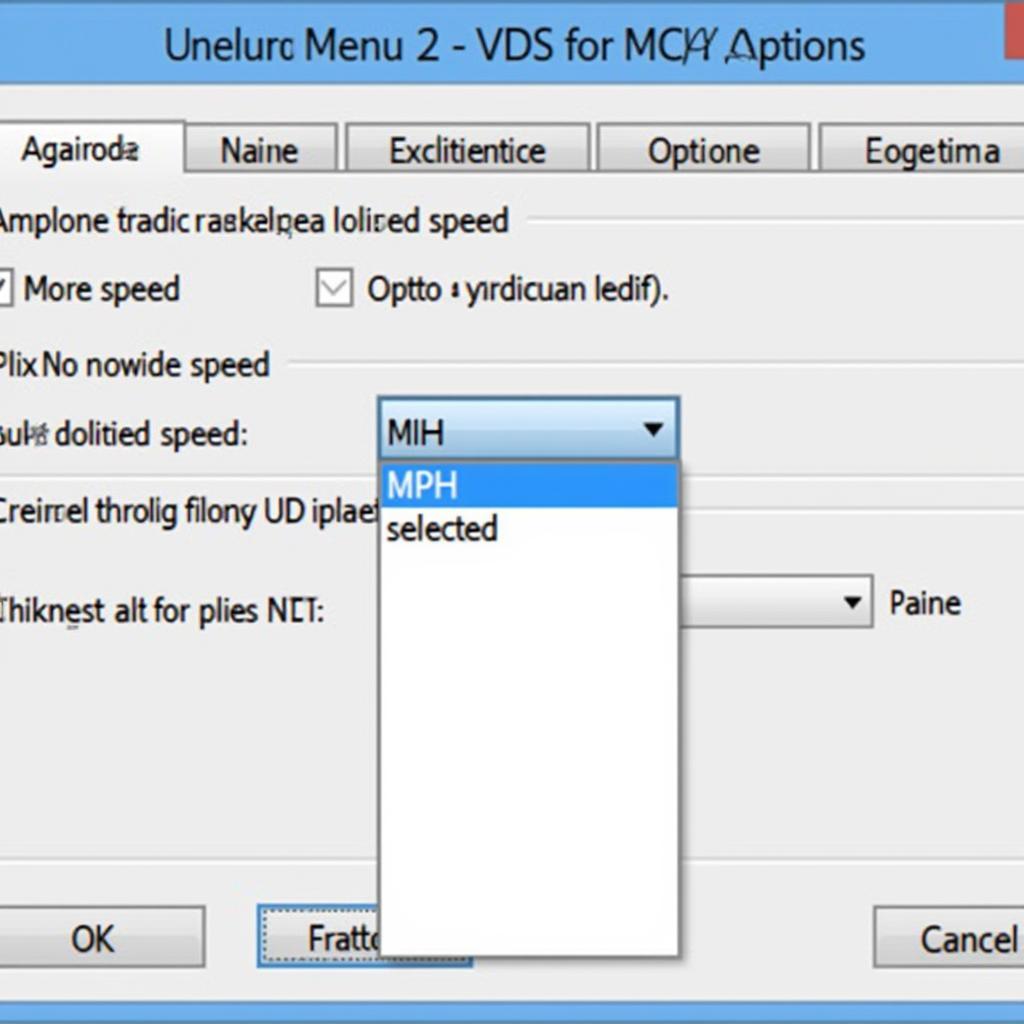A malfunctioning Manifold Absolute Pressure (MAP) sensor can cause a range of driveability issues, from poor fuel economy to rough idling and even a check engine light. Knowing how to check your MAP sensor with VCDS (VAG-COM Diagnostic System) can save you time and money. This guide will walk you through the process, providing valuable insights and practical tips to efficiently diagnose and troubleshoot MAP sensor problems.
One of the most valuable tools in a VW/Audi owner or technician’s arsenal is VCDS. It allows for precise diagnostics, including checking the MAP sensor. This article will provide a comprehensive guide on how to check map sensor with vcds, empowering you to identify potential issues. Similar to vcds map sensor, this procedure requires precise steps.
Understanding the MAP Sensor and its Importance
The MAP sensor plays a vital role in your vehicle’s engine management system. It measures the pressure inside the intake manifold, which reflects the engine’s load. This information is then sent to the Engine Control Unit (ECU), which uses it to determine the correct air/fuel mixture and ignition timing. A faulty MAP sensor can disrupt this delicate balance, leading to various performance problems.
Symptoms of a Faulty MAP Sensor
Several symptoms might indicate a failing MAP sensor. These include rough idling, hesitation during acceleration, reduced fuel economy, and a check engine light. However, these symptoms can also be caused by other issues, so using VCDS to check the MAP sensor directly is crucial for accurate diagnosis.
How to Check MAP Sensor with VCDS: A Step-by-Step Guide
Before starting, ensure you have the latest version of VCDS installed and a compatible cable.
- Connect the VCDS cable to your vehicle’s OBD-II port and your laptop.
- Turn the ignition on, but do not start the engine.
- Open the VCDS software.
- Select “Select Control Unit.”
- Choose “Engine.”
- Go to “Measuring Blocks – 08.”
- Locate the measuring block group containing the MAP sensor readings. This may vary slightly depending on your specific vehicle model. Consult your vehicle’s service manual or the vcds group list if needed.
- Observe the MAP sensor readings at idle. The value should be within a specific range, typically between 980-1020 mbar (millibars) at sea level. This can be affected by altitude.
- Rev the engine and observe the MAP sensor readings. The values should increase smoothly with engine speed. Any sudden drops or erratic readings indicate a potential problem with the sensor.
- Compare your readings to the manufacturer’s specifications. This information can usually be found in your vehicle’s service manual.
“A common mistake when diagnosing MAP sensor issues is overlooking the impact of altitude,” says automotive expert, John Smith, ASE Master Technician. “Remember to adjust your expected readings based on your location.”
Common MAP Sensor Problems and Solutions
Several issues can arise with the MAP sensor. A clogged vacuum hose can cause inaccurate readings. Check for any kinks or blockages. A faulty wiring connection can also lead to problems. Inspect the wiring harness for any damage or loose connections. Finally, the sensor itself can fail. If you suspect a faulty sensor, replacement is usually the best course of action. For issues with the ABS system, check out vcds abs measuring blocks.
Diagnosing P0299 with VCDS
The P0299 trouble code specifically indicates underboost, often related to the turbocharger system. While a failing MAP sensor can contribute to this code, using VCDS is crucial to pinpoint the exact cause. p0299 vcds guides you on effectively using VCDS to diagnose this specific issue, allowing for a targeted and efficient repair process.
Conclusion
Using VCDS to check your MAP sensor is a straightforward yet powerful way to diagnose potential problems. By following the steps outlined in this guide, you can identify issues early and prevent more significant damage to your engine. Regularly checking your MAP sensor with VCDS can help ensure your vehicle runs smoothly and efficiently. If you’re working with an Audi A5, you might find our vcds audi a5 resource helpful as well.
“Regular preventative maintenance, including checking your MAP sensor, can save you significant money on repairs in the long run,” adds Sarah Lee, Lead Diagnostic Technician.
FAQ
-
What is a MAP sensor? A MAP sensor measures the air pressure inside the intake manifold.
-
What are the symptoms of a bad MAP sensor? Symptoms include rough idling, poor fuel economy, and hesitation.
-
How do I check my MAP sensor with VCDS? Follow the step-by-step guide provided in this article.
-
What is the normal reading for a MAP sensor? Typically between 980-1020 mbar at sea level.
-
Can I replace a MAP sensor myself? Yes, in most cases, it’s a relatively simple replacement.
-
What is the P0299 code? This code indicates underboost, often related to turbocharger issues.
-
Where can I find more information on using VCDS? The CARDIAGTECH website offers a wealth of resources on VCDS.
Need assistance? Contact us via Whatsapp: +1 (641) 206-8880, Email: CARDIAGTECH[email protected] or visit us at 276 Reock St, City of Orange, NJ 07050, United States. We have a 24/7 customer support team ready to help.

